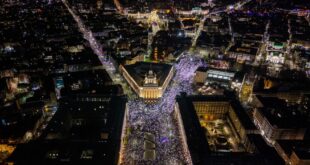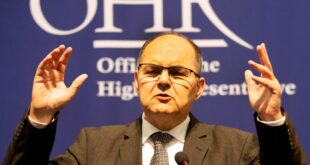While voters have a range of parties to choose from on June 8, the ideological differences between most of them appear slim.
Kosovo’s nearly 1.8 registered voters have 30 parties to choose from in the June 8 elections, but when it comes to ideologies, their choices are more limited.
Four of the five largest political parties are campaigning with strikingly similar programs.
The Democratic Party of Kosovo, PDK, the Democratic League of Kosovo, LDK, the Alliance for the Future of Kosovo, AAK, and the New Kosovo Alliance, AKR, all promise free-market based economic development, which they say will create thousands of new jobs.
Their campaigns are dominated by promises rather than contrasting visions of the future of the country.
Political consultant Kushtrim Shaipi said the result could be ‘the establishment of [governing] coalitions without any principles, based on arithmetic calculations to ensure a majority of votes for the government and not based on values and political beliefs.’
Driton Selmanaj, from the Kosovo Democratic Institute, agrees that the parties largely lack any ideology and operate ‘based on improvised plans, without any project or clear orientation’.
The PDK, AAK and LDK see themselves as parties of the centre right, while the AKR defines itself simply as a centrist party.
While the business-oriented economic promises mesh with centre-right politics, the promises on welfare, including on national health insurance and increased pensions, tilt more left.
Only the AAK responded to Balkan Insight’s questions concerning party ideology – albeit vaguely.
‘As a centre-right party, we create and promote the freedom of individuals, freedom for initiative, freedom of expression, religion, and competition in all areas of life,’ it said. ‘We are convinced that with free individuals we will have a free society, a developed state and a stable democracy,’ it added.
Instead of ideology, Kosovo’s largest parties are principally associated with their leaders and with history.
The PDK and LDK both trace their origins to the growing resistance to Serbian rule in the 1990s. Founded by the late Ibrahim Rugova, the LDK arose as a movement of peaceful resistance. The PDK on the other hand, founded by former members of the Kosovo Liberation Army, is rooted in armed struggle.
The two parties have thus represented opposing traditions in Kosovo, even though ideologically little distinguishes the two. The parties were in a governing coalition from 2008 to 2010.
Among the major parties, only Levizja Vetevendosje [Self-Determination movement] can be considered left wing. The party has positioned itself as the champion of the lower and middle class and calls for ‘fiscal policies to balance the burden of financing the budget’.
Vetevendosje MP candidate Zgjim Hyseni says the parties that claim to be on the right of the spectrum in fact ‘act to the opposite of that.’
Hyseni said one notable example of the confusion between what was left ant right was Kosovo’s independence in 2008.
Independence, which was declared in accordance with a plan created by Finnish Diplomat Martti Ahtisaari, which envisages a multi-ethnic state.
‘All the parties approved the Ahtisaari plan, which denies the nationalistic Albanian element as a state-building factor for Kosovo – but if we look at the ideological categorization, nationalism is actually related to the right,’ Hyseni noted.
 Eurasia Press & News
Eurasia Press & News

